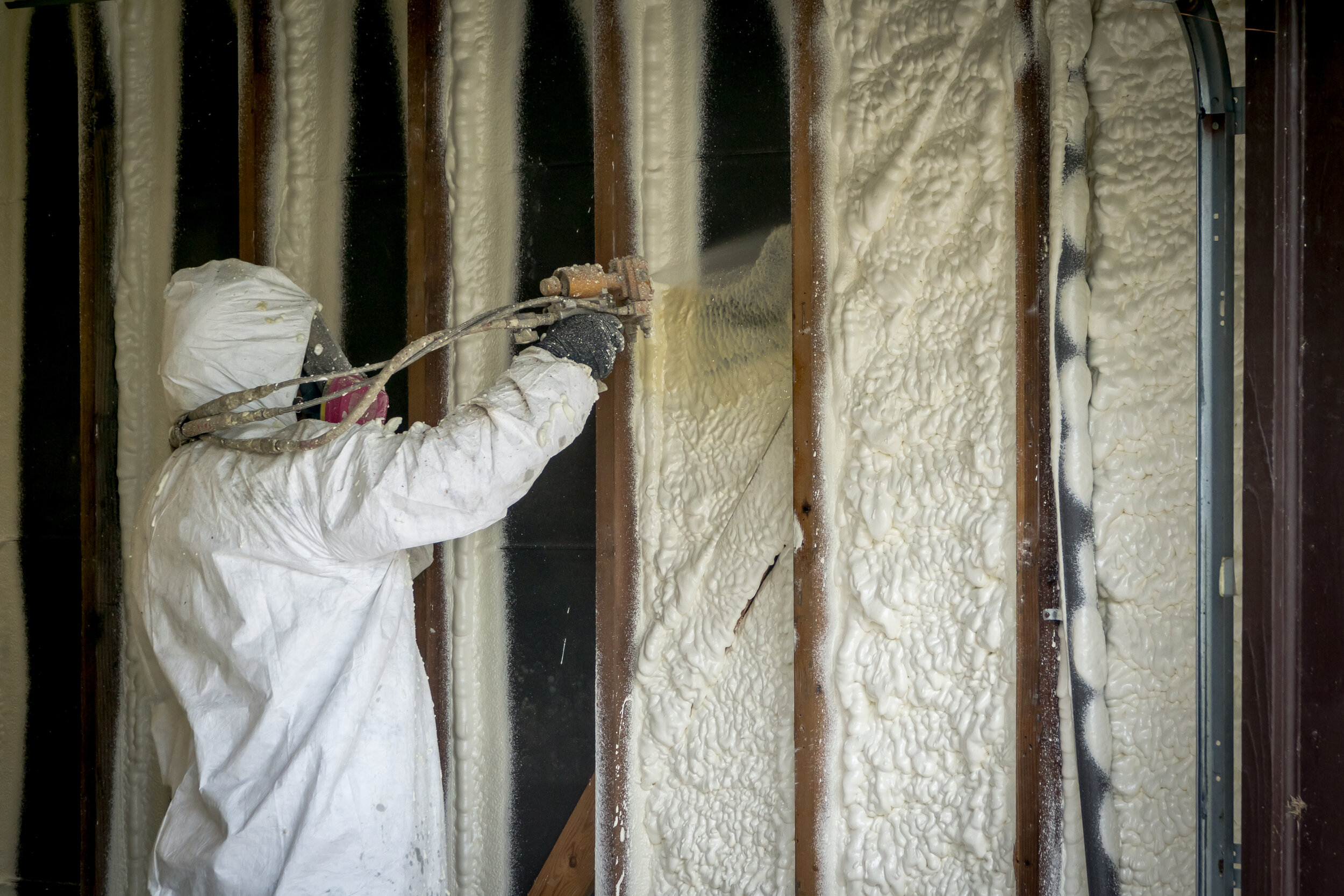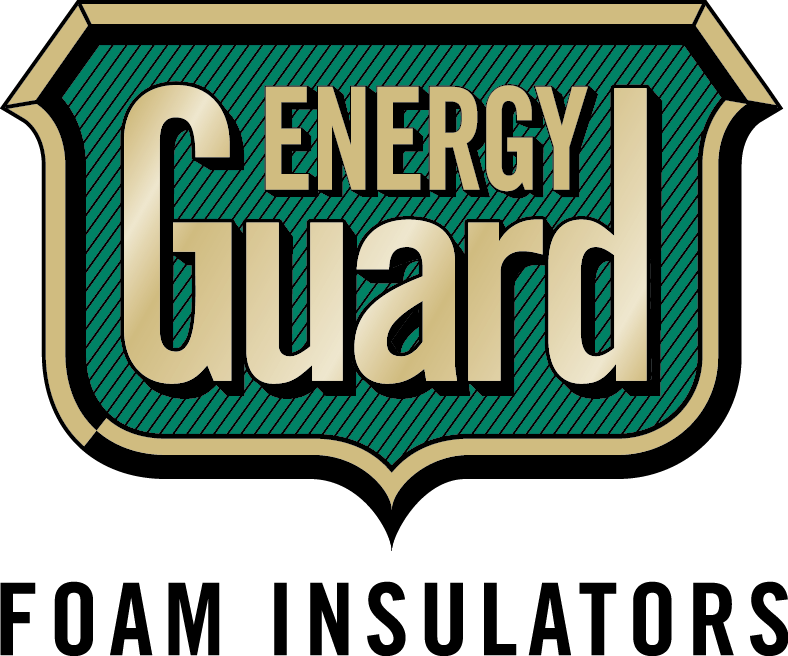
Spray Foam Benefits Don’t Stop in the Walls
For More Than 15 Years, Texas Home Builders Choose EnergyGuard Spray Foam Insulation
“Sullivan Brothers Builders uses EnergyGuard Foam Insulation as a standard feature because it allows our homeowners to save money, it provides superior indoor air quality, and makes for a more comfortable, healthier home.”
Scott Burrer, General Manager, Sullivan Brothers Builders
Used in Evia on Galveston Island, Harper Woods, Studemont Heights, Tulane Trails, Timbergrove Trails, and Tierra Vista.
FOAM IS MORE ENERGY EFFICIENT
Foam eliminates air infiltration, which is a huge drain on energy bills.
Foam has a higher performing R-value than other types of insulation.
Foam does not deteriorate and sag in the walls, as do other types of insulation.
A wall is not insulated if the fiberglass has fallen to the bottom of the wall.
Also, fiberglass is known to shrink as it ages leaving voids in walls.
Foam fills every crack and crevice and stays in place forever.Foam insulation does not hold water. Should your house flood, for example, the foam insulation in the walls will dry out and its physical properties fully restored. The same can't be said about fiberglass or cellulose.
Foam is Healthier
By stopping air infiltration dust, pollen and mold spores are kept out of the home, eliminating many health concerns.
Foam insulation does not enable mold growth. Mold needs food, air and water to survive. Due to the fact air infiltration is eliminated and polyurethane foam is not a source of food for mold, the probability of mold developing in your walls is significantly reduced.
Foam insulation contains no formaldehyde, chlorofluorocarbons (CFC's), hydrochlorofluorocarbons (HCFC's) and has no toxic off-gassing.
Foam Can Reduce Your
AC Requirements
Due to the elimination of air infiltration, foam insulation can reduce your heating and air conditioning tonnage by as much as 40% without the loss of efficiency or comfort. This allows the homeowner to purchase a smaller, less expensive AC unit.
In homes using a "closed attic assembly" - meaning we spray foam insulation in the walls and under the roof decking and close or eliminate all soffit and ridge vents — the attic becomes a semi-conditioned space. When the attic becomes a semi-conditioned space, the temperature of the attic is no longer 120 degrees but is around 90 or 95 degrees. This means attic air that inevitably leaks into your AC ducts is now cooler, and the AC unit is not working as hard to cool the home to a desired temperature. This benefit holds true in cold weather as well, as the desired temperature is now hot compared to cold air that will leak into ductwork in a cold "open" attic.
How Does it Compare to Fiberglass or Cellulose?
Foam insulation outperforms both fiberglass and cellulose insulation due to the simple fact that air infiltrates both fiberglass and cellulose. When this happens, the R-value of these inferior products can drop by as much as 50%. Because fiberglass and cellulose do not eliminate air infiltration, once air passes across these products, their R-value drops. Bottom line: Just because it's rated an R-30, doesn't mean it's going to perform to an R-30. When products are tested for their R-value in a lab it's a static environment, meaning there is not air passing across or against the material. Ultimately, this is not how the home will properly function. Where you have penetrations in your exterior walls for windows, doors, sill plates, vents and hose bibs, you have air infiltration. Once that air hits fiberglass or cellulose, the R-value it was assigned at testing is inaccurate.
Additional FAQs:
IS FOAM INSULATION TOXIC OR HARMFUL TO MY FAMILY'S HEALTH?
No it is not. Foam insulation does not contain any formaldehyde, chlorofluorocarbons (CFC's) or hydrochlorofluorocarbons (HCFC's), and does not give off any toxic gases.
WHAT ABOUT MOLD?
Mold needs air, food and water to live. By using foam insulation, you've eliminated the source of food for mold. Also, because moisture is transported in the air and we've eliminated the passage of air, you have significantly reduced the likelihood of mold forming in your home. If a pipe bursts in your wall and your foam insulation gets wet, it will simply dry out and its physical properties are fully restored.
WHERE CAN I USE FOAM INSULATION?
You can use foam insulation in a variety of applications. Foam insulation is great for insulating walls, attics, crawlspaces (under your home), wine rooms, wine cellars, exterior surfaces, metal buildings, barns, etc. Foam insulation can be used for commercial and residential, interior and exterior, wet or dry applications. If there is an instance where you want to separate two environments of differing temperatures, you can and should use foam.
MY HOUSE IS ALREADY BUILT. CAN I STILL USE FOAM INSULATION?
Absolutely! If your house is on stilts or raised off the ground, you can and should spray the underside of your home, known as the crawlspace. You can also spray foam in your attic. Here you have to make a choice. In an existing home, we can come in and spray foam on the attic floor and you will immediately realize the energy savings. You can also choose to "close" the attic. This means we spray against the underside of the roof decking, closing off all vents, and remove any insulation on your attic floor. THIS REQUIRES MINOR MODIFICATIONS TO YOUR AC UNIT. Because most AC units run by combustion, your AC unit needs oxygen. If we seal the attic, it's no longer vented, which deprives your AC unit of the oxygen it needs. You will need an AC contractor to install a fresh air intake to insure your AC unit gets enough oxygen to continue burning. We can help you with this. We work with several reputable AC contractors who are familiar with the foam movement, know exactly what you need, and work hand-in-hand with our team to help you save money.
CAN I USE FOAM FOR SOUND ATTENUATION?
Definitely. Foam insulation's sound attenuating qualities are one of the most impressive benefits of the product. Foam insulation has a noise reduction coefficient of .75. An NRC of 0 represents perfect reflection, while an NRC of 1.0 represents perfect absorption. The NRC is an average of four sound absorption coefficients of a material at frequencies of 250Hz, 500Hz, 1000Hz and 200Hz.
WHAT IMPACT WILL FOAM INSULATION HAVE ON MY HOUSE?
Your energy bill will be lower, your house will be healthier, your AC unit will probably be smaller (new construction), your AC unit will last longer, you will significantly reduce the probability of mold developing in your walls, your home. will have less dust, your home will be quieter, your insulation will not lose it's value, and you will live in a draft-free home.





